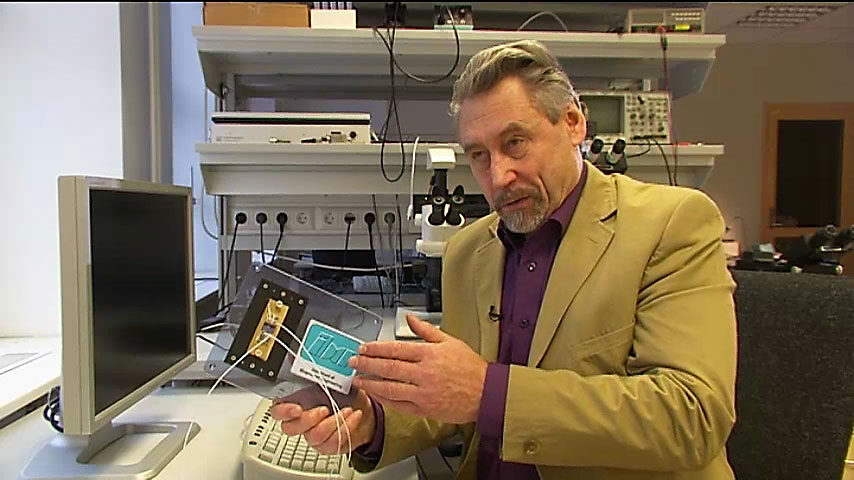The research group of Thomas Johann Seebeck Department of Electronics of Tallinn University of Technology (TalTech) received a patent for the invention of superfast impedance spectroscopy measurement technology (1000 spectra per second). This is already the 12th invention of Tallinn University of Technology in the field of electrical impedance for which the US Patent Office has granted a patent. US patents are highly valued in our research and economic circles as an economically highly important intellectual property established in a leading industrialized country.
The newest invention of TalTech electronics engineers can be applied:
– to monitor recovery of limbs with transplanted tissues,
– to analyse and diagnose the state of the nervous system of newborns and infants by lumbar puncture (collection of cerebrospinal fluid),
– hopefully, to continuously monitor the state of liver transplants and other transplanted organs.
The head of the research group of Thomas Johann Seebeck Department of Electronics, Mart Min, says, “This patent was granted for the superfast impedance spectroscopy measurement technology (1000 spectra/s) developed by TalTech scientists. The modern technology offers a ‘seamless’ connection between the artificial digital world and the physical human body.”
Bioimpedance is the complex electrical impedance of a living organism. By impedance we usually refer to electrical impedance of e.g. an electric stove, an incandescent lamp etc., where a current flowing through produces heat or light. Electrical impedance becomes much more complex in a human body, where it is applied for diagnostic purposes. Professor Mart Min explains, “The information required for diagnostics is obtained by measuring electrical bioimpedance. Measuring of bioimpedance is similar to measuring common electrical impedance by an ohmmeter, being however much more complicated and relying on wide-band measurement of the AC voltage induced by a tiny electric current directed into human body.”
The method of bioimpedance analysis was introduced first by our researchers 19 years ago, when Tallinn University of Technology signed a cooperation agreement with the US company Saint Jude Medical for the development and manufacturing of pacemakers.
The new bioimpedance analysis method that has just been patented can be used mainly in three areas of medicine:
– First of all, in diagnosing cardiovascular diseases. These diseases are the leading cause of death. In case of a cardiovascular disease human tissues receive less oxygen-rich blood and if the blood flow is disturbed, a human organ is unable to function normally due to lack of oxygen. As a result, pathological changes occur in cell structures and tissues, which may have irreversible consequences, myocardial infarction being the most fatal one. A pacemaker controlled on the bases of bioimpedance helps to prevent overstimulation of the cardiac muscle and thus avoid the risk of myocardial infarction.
– Secondly, the method can be used to monitor tissue transplants, i.e. it can be applied in the the follow-up monitoring of tissues transplanted in reconstructive surgery. The most complicated part of transplantation is restoration of blood flow and its result, i.e. final recovery, is monitored by the bioimpedance based method.
– Thirdly, the new method can be used to monitor the functioning of transplanted organs. There is increasing talk of kindney and heart transplantation in modern medicine, but successful liver transplantation is still an evolving area, where Professor Min hopes to participate with his invention.
“The recently patented superfast impedance spectroscopy measurement technology is a further step towards making the modern digital world compatible with the natural living organism, the purpose of which is obviously to extend human healthspan,” Professor Mart Min says.
Taltech represents Estonia with this topic in the European joint programme Health EU.
Original post by the Tallinn University of Technology.
 Back
Back



